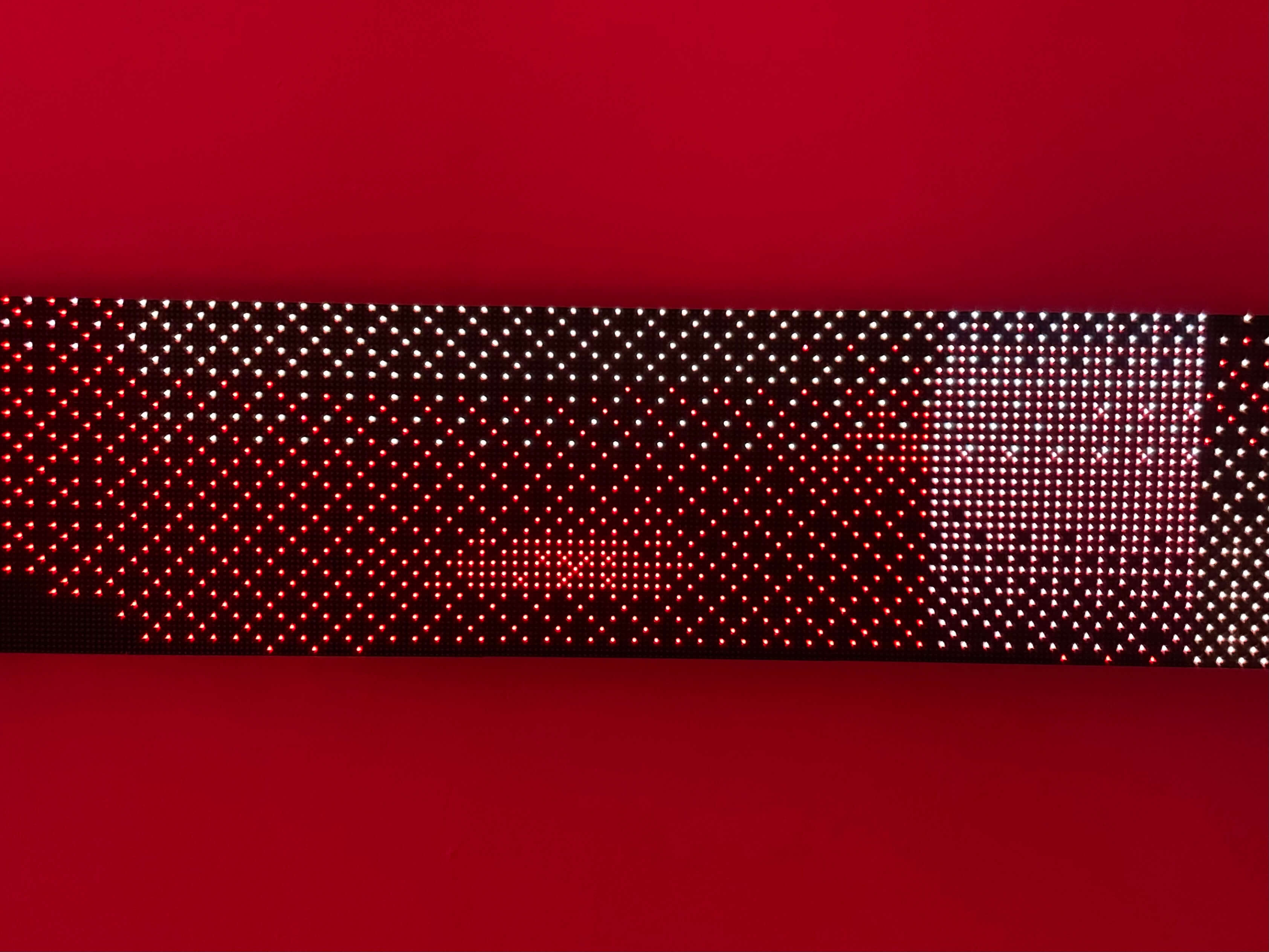
DOTWORK [ 64x1280px]
video/light installation
physical pixel, LED, dither algorithms, ecology, light pollution, tourism, led billboard, exploatation, capitalism, ecology, supply chain, microwork, modern slavery
Branimir Štivić began exploring pixels as units of image creation on the project CONVEYOR [192x1536px], presented in December 2022 at the Miroslav Kraljević Gallery (GMK) in Zagreb. That is when he began producing devices for video reproduction in the form of a long LED screen. He obtains materials, electronic components, and semi-finished products from large online marketplaces in Asia, making the processes of procurement, communication, and production integral to the exhibition. During the last two years, Branimir Štivić's work has been focused on exploring of the physicality of pixels, their graphic potential, as well as the invisible economic and ecological issues related to the production and use of electronic components. He continues to arrange various LED screen setups for upcoming exhibition projects, further exploring the specificity of the medium and its power through compositions of dazzling pixels.
The digital image is the result of positioning and rearranging dots within a given orthogonal grid—a matrix that simulates image continuity. Dotting is not a twentieth-century innovation; it has been present in various industries predating digital culture. For example, in the textile industry, weaving methods such as jacquard and petit point replicate analog displays, producing images with smooth color transitions and figures through mathematical and digital techniques. Similarly, in printing, techniques such as color halftone or Ben-Day dots are used to achieve certain shades and transitions between color tones. In fine art, the technique of painting with dots of pure color, popularized by the 19th-century pointillism movement, also follows this approach.
The concept of dot-based image organization is also applied in dithering, an algorithm that rearranges pixels on digital screens to simulate gradients or grayscale using only two colors. Dithering helps digital screens overcome the constraints of low-resolution images and the limited color range available to each pixel within a larger system. The original image is transformed into monochrome, with pixels rearranged in the grid based on specific rules to achieve clearer displays or layered colors. In the This technique played a crucial role in the graphical interfaces of personal computers and 8-bit arcade games during the 1980s.
A younger audience may remember animated GIFs from social networks like Tumblr featuring cats pushing cups, flashing signs, dolphins, and tropical island scenes rendered in dot-based images. Dithering techniques like "random," "ordered," and "error diffusion" evoke nostalgic displays from earlier periods of digital culture.
In his research, Štivić explores how pixels can be structurally utilized, resulting in varying levels of resolution and image quality. Technological advancements driven by various marketing strategies consistently push for higher screen resolutions. We have progressed from Standard Definition (SD) at 720 x 576 pixels to household products featuring 8K Ultra High Definition (UHD) at 7680 x 4320 pixels. Higher or lower resolution levels indicate a preference for more or less detail, but they also carry historical connotations as they testify to the moment of development of digital communication technologies in a particular period.
In comparison to working with high-resolution images characterized by sharpness and precise realism, Štivić prefers playful explorations of lower-resolution images. He focuses on preserving essential light elements like pixels, which uncover the tangible aspects of the image. The raster animation displayed on a long LED screen (1280 x 64 pixels) draws inspiration from the graphic aesthetics of the late 1990s. Additionally, four basic screens with LED strips on both sides (163 x 4 pixels) partially pixelate sections of the wall. The exhibition's elements not only emphasize the physicality of pixels but also explore screens as luminous mediums that, through the diffusion of pixels, transform the space in the gallery into an ambient.
During the exhibition, the installation will remain active throughout the night, allowing the artist to question the absence of darkness in urban areas, specifically in the local tourist hotspots. LED signs, screens, billboards, media facades, and architectural light in historic city centers emit light in multiple directions, contributing to light pollution. While this ecological issue is global, public and legal concern about light pollution has only recently gained traction. Originally defined by astronomers, the term is now used by ecologists, physiologists, and neurologists who study the adverse effects of disappearing darkness. The increased brightness of the night sky and faulty direction and intensity of artificial light impact human health and disrupt the navigation of plants and animals. Circadian rhythms, once guided by natural day-night cycles, are now entirely disrupted by artificial illumination. Recent research indicates that flying insects do not gravitate towards artificial lights but perceive them as natural nocturnal illumination, causing them to veer off course and circle aimlessly. While human eyes can adjust to darkness over time, the process of accumulating the necessary pigments in our eyes takes at least thirty minutes as daylight wanes, and achieving peak sensitivity and orientation in darkness takes even longer. Residing in large cities inhibits the development of night vision due to the continuous exposure to various light sources that hinder the accumulation of visual pigments like rhodopsin. Satellite imagery of these cities illustrates how light often correlates with the economic and political power of specific geographical regions.
Štivić examines the simple dot or pixel as a foundational element of an image that emits light in multiple directions. This dot can also be seen as a fundamental element in a society that is based on relationships "mediated through images". We experience the world through captivating digital images that seduce, mislead, and guide us toward desired directions. The size of pixels dictates the viewpoint, while the spacing between them renders the image more or less coherent, truthful, or deceptive. These images scatter pixels into the night sky, colonized by the light particles of technological progress.
Lovro Japundžić
1 Casetti, Francesco; Somaini, Antonio: Resolution: Digital materialities, thresholds of visibility.
In: NECSUS. European Journal of Media Studies, Jg. 7 (2018.), str. 88
2 Eklöf, Johan: The Darkness Manifesto: On Light Pollution, Night Ecology, and the Ancient Rhythms That Sustain Life, SCRIBNER (2024.), str. 12
3 https://anarhisticka-biblioteka.net/library/guy-debord-drustvo-spektakla-sr
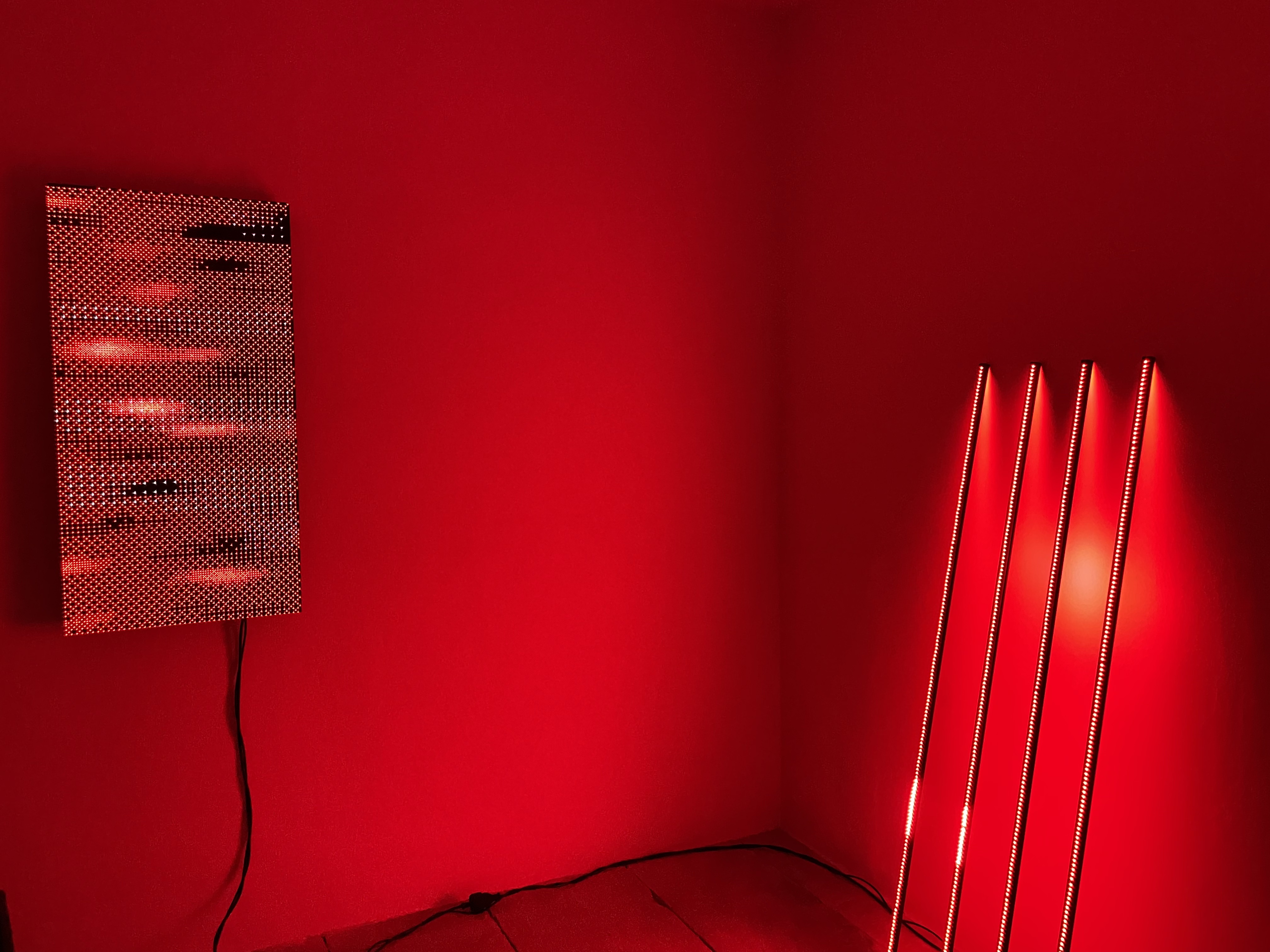
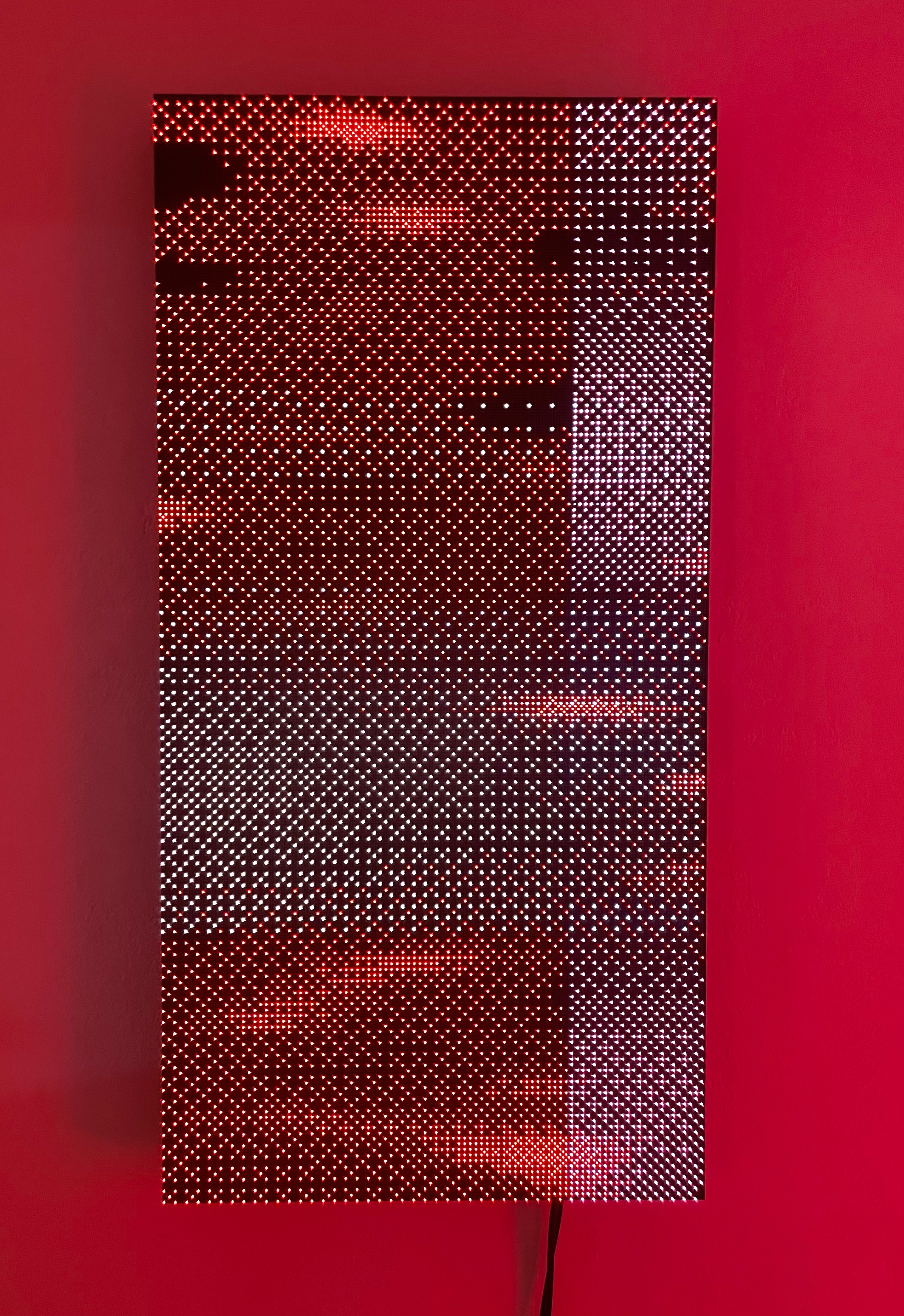
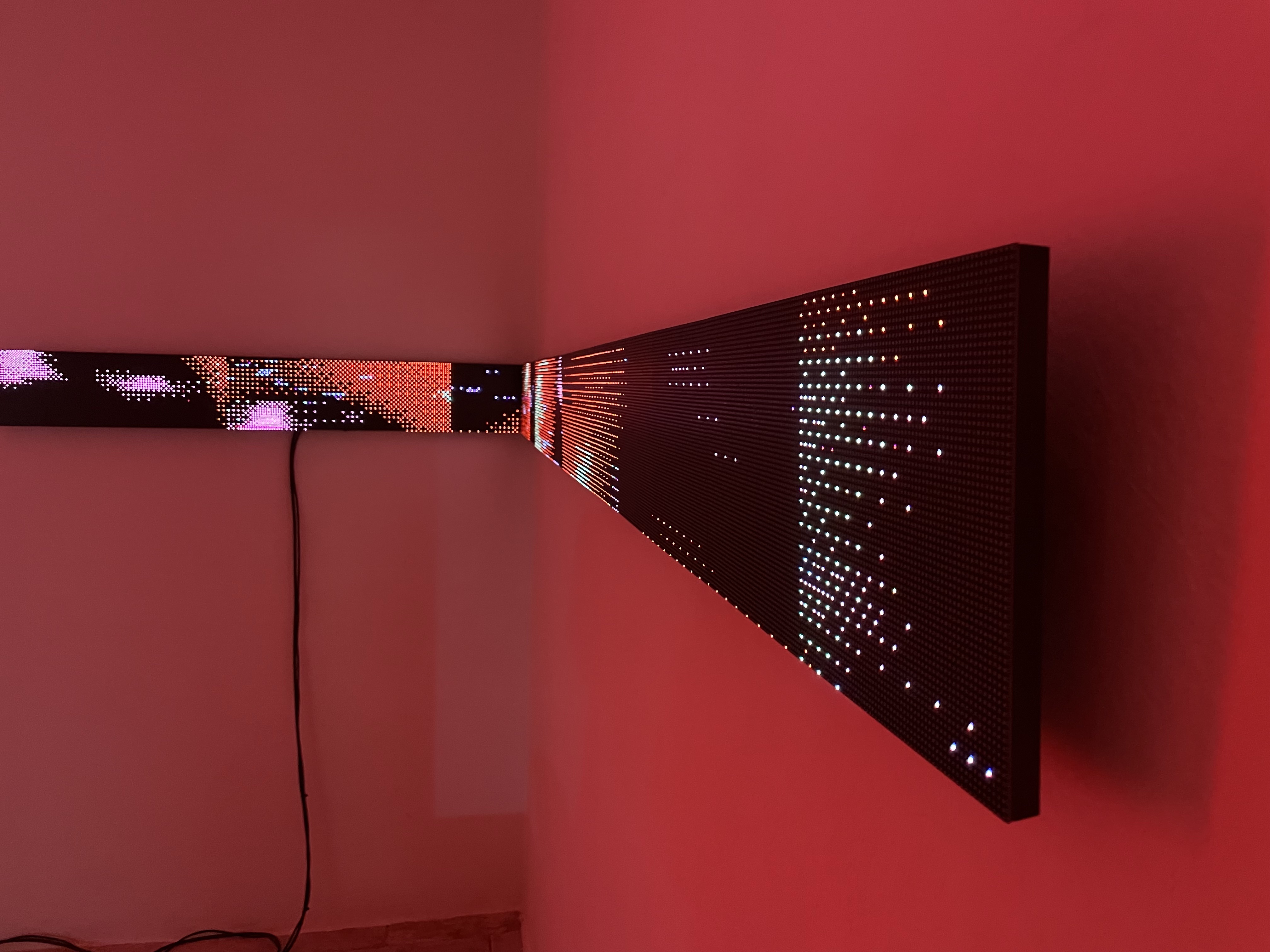
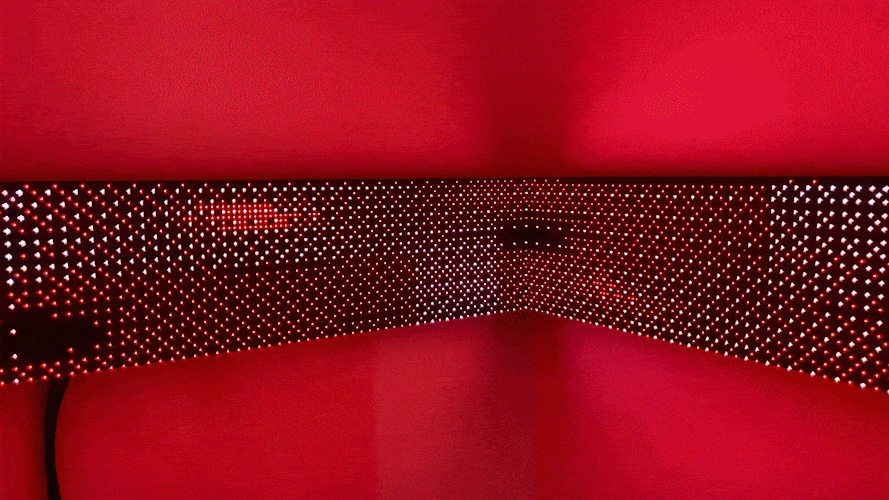
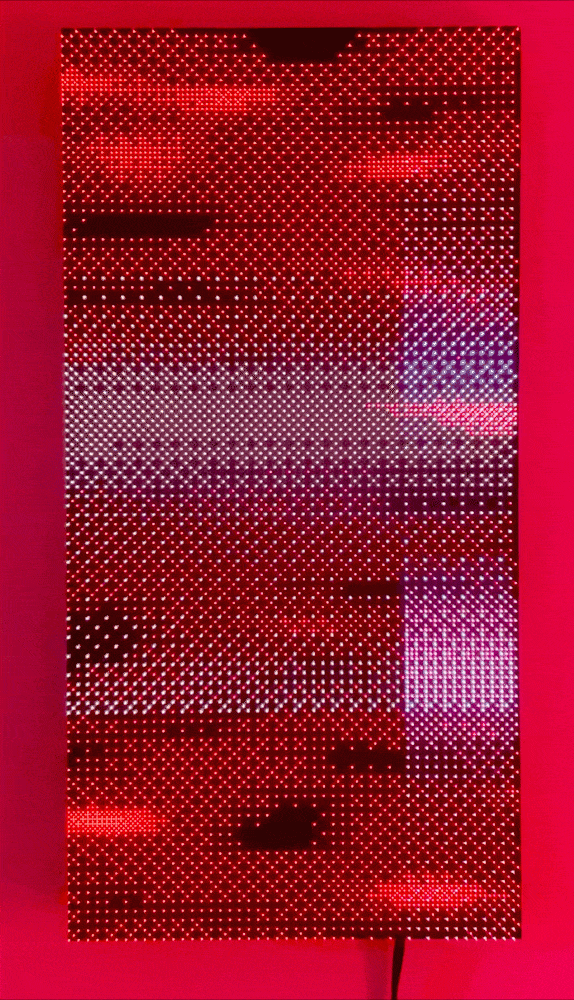
Izloženo
Galerija Rigo, Novigrad, 2024
Curator: Jerica Ziherl
Curatorial statement: Lovro Japundžić
Year: 2024